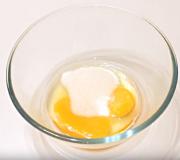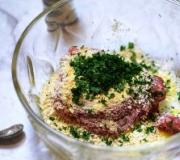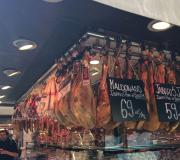Skirt with counter pleats and knots. A skirt with bow pleats is a godsend for every woman.
Kilt is the name given to a men's pleated skirt, which is quite popular not only in Scotland among men, but among the fair sex all over the world. That is why today you can find many girls, girls and women wearing pleated skirts of various models.
Photo: Skirt with pleats
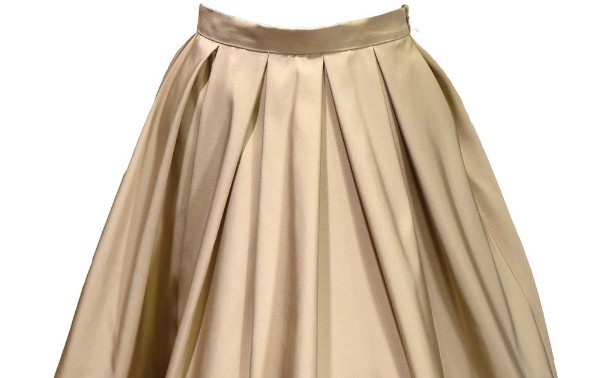
The main feature in this type skirts lies in the type of folds, which can be one-sided (laid in in a certain direction), counter (laid towards each other), bow (directed towards different sides in an indefinite order), as well as narrow and wide, straight, group, fan, asymmetrical or stitched by several centimeters.
With bow pleats
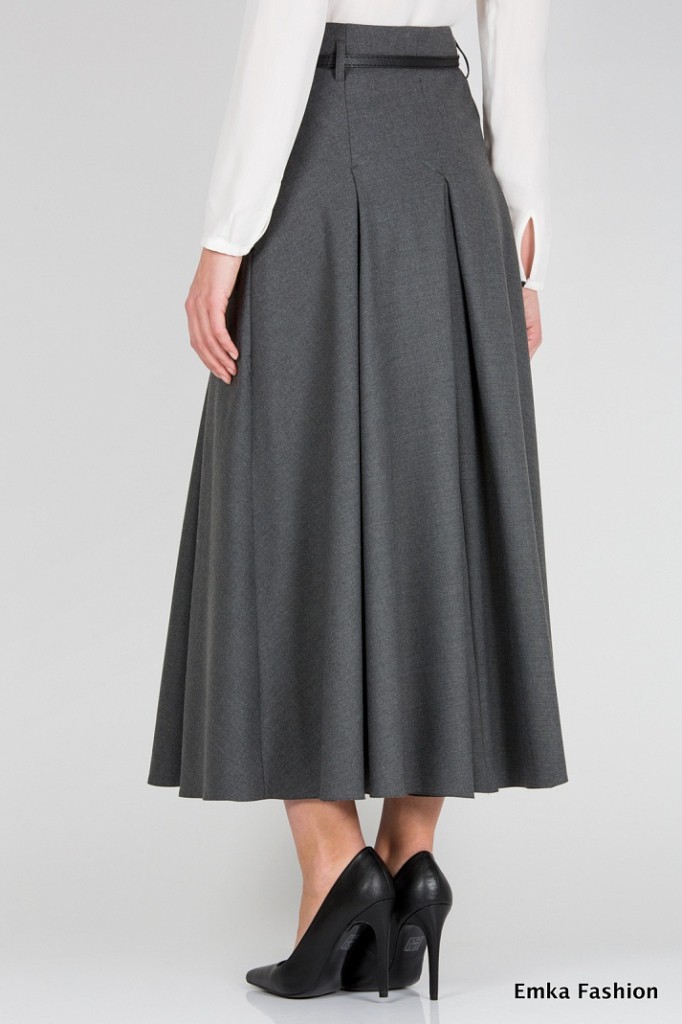
Skirts with bow pleats can be long, knee-length or short. Their main feature is that thanks to this arrangement of folds, the skirt turns out fluffy and hides wide part hips Such skirts can be either plain or checkered. Rarely found in variegated colors.
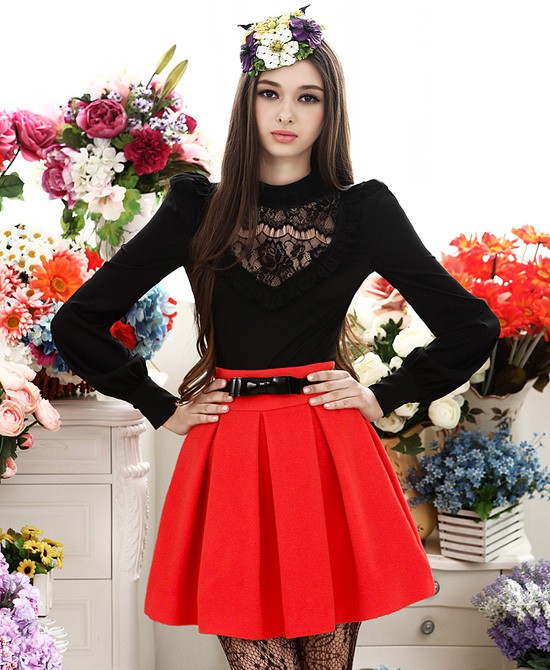
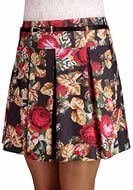
Sun and half-sun skirts with bow pleats are considered common; these are the models that are compatible with a similar cut.
With counter folds
Skirts with counter pleats are most often plaid. These styles are called tartans. They come to the knee and are short. The pleats can be in any number; they start from the waistband and continue to the hem, making the skirt flexible and swaying beautifully when walking.
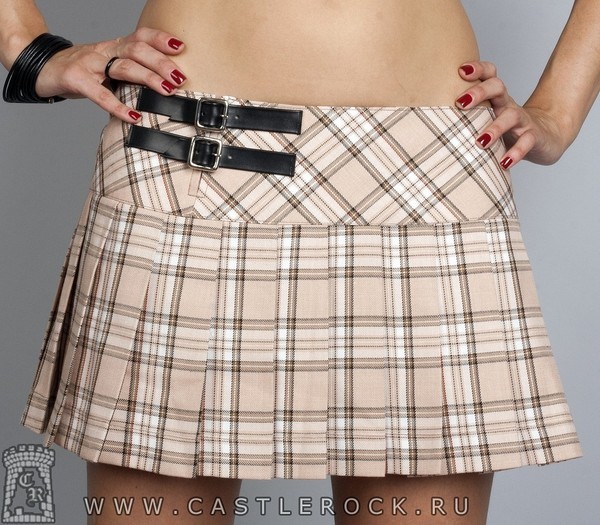
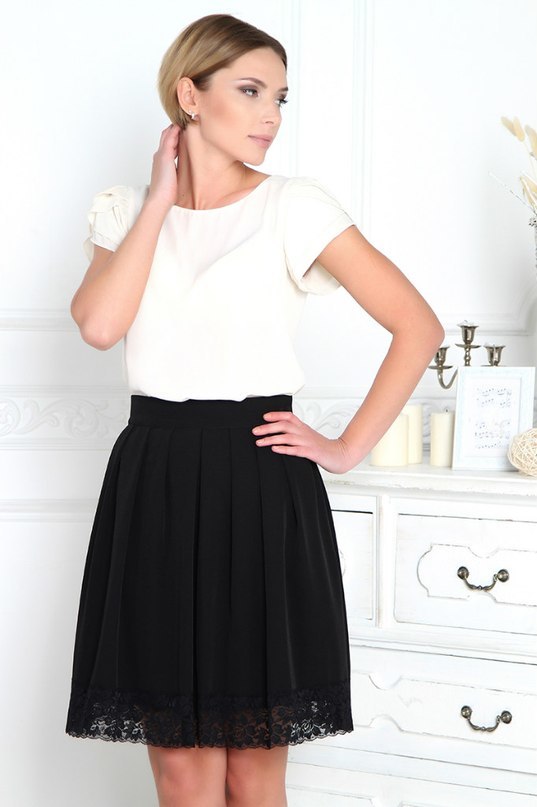
In addition, the folds on the skirt make it fluffy, in this case it is only suitable for long or knee-length skirts.
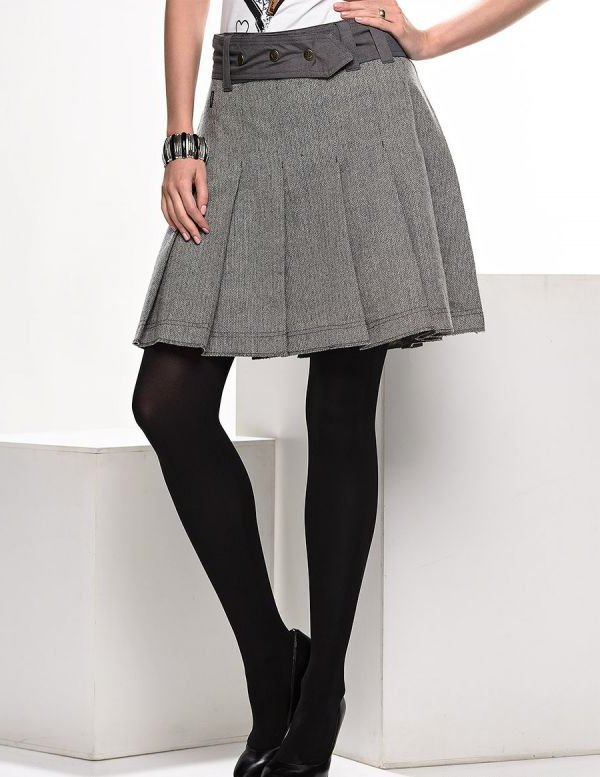
Dress with pleated skirt
Modern designers have made many changes to the cut of the pleated skirt. So, today there are models with one single opposite fold, located in the middle of the front panel of the skirt or on one of the sides. In this design you can also find dresses in which the skirt is pleated. Dresses with counter pleats and bow pleats are also relevant. This gives lightness and elegance, both for casual style, and for the evening.
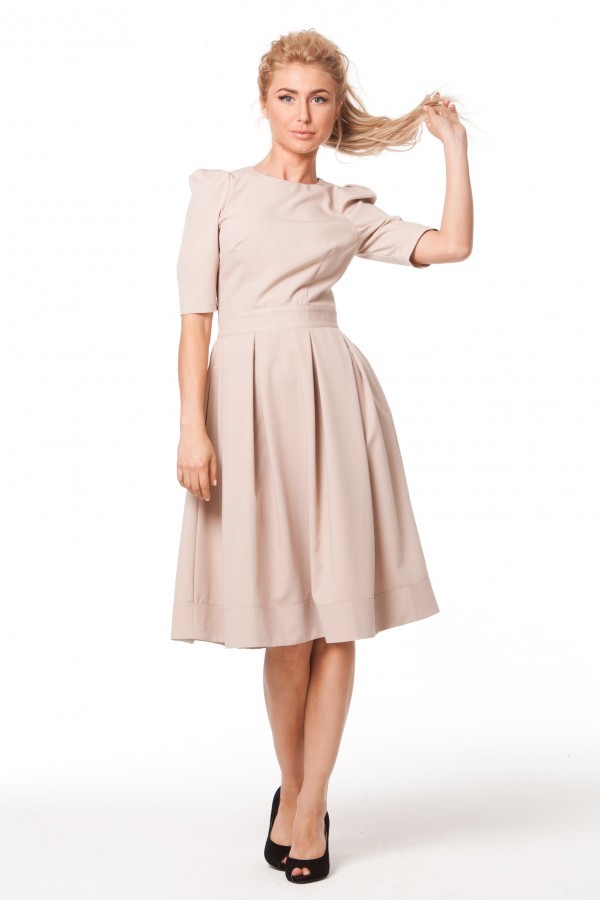
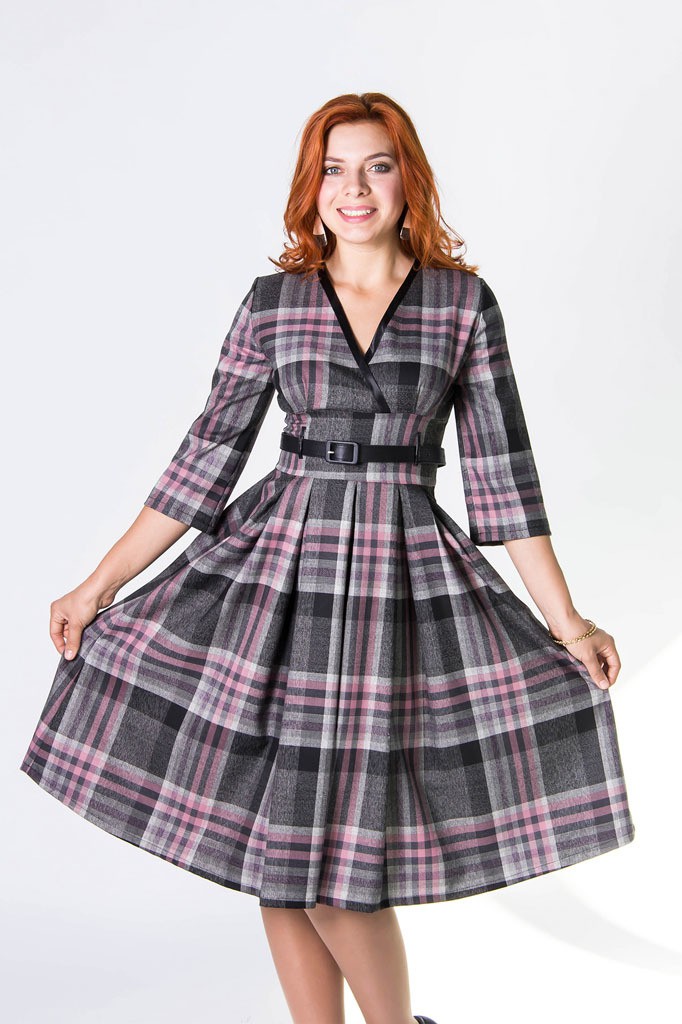
Video: How to sew a pleated skirt with your own hands
We suggest you look at the pattern for a pleated skirt, as well as how you can sew it with your own hands at home.
What to wear with
Skirt styles with pleats are quite wide; the top should have a tight-fitting silhouette so that the overall figure does not turn out to be bulky. You can wear a classic blouse, turtleneck, or light jumper.
If the skirt is worn in warm weather everyday look, a thin T-shirt or blouse with short sleeves and a square neckline will go perfectly with it. For the office, a pleated skirt can be combined with a short, fitted jacket.
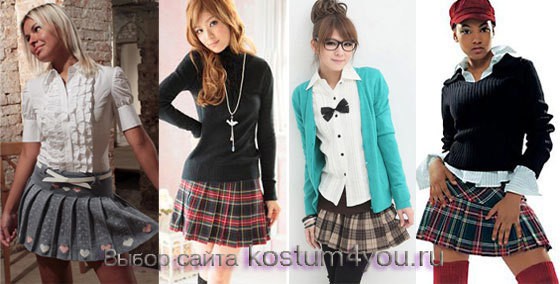
It is better to choose shoes with heels. This outfit looks great with classic mid-heeled stilettos, and in the cooler months with ankle boots or neat boots with the same stilettos.
A skirt is a good wardrobe item because it can be ideally complemented with a blouse, blouse, T-shirt or top. The advantage of this product is the ability to create new images and outfits, ensuring freedom of movement and originality of execution. A skirt with bow pleats directed in a chaotic manner in different directions has gained particular popularity. Folds can differ in width and number, be wide or narrow, fan-shaped or asymmetrical. The fact that they start from the waist to the hem creates an incredibly light and romantic image. The gait becomes beautiful and soft, and the woman feels irresistible, tender and young.
Models: to whom, which ones are suitable?
Products with bow folds look very impressive and allow you to hide flaws and highlight the advantages of your figure. You can purchase amazing floor-length designs that will create a luxurious look and add elegance to your silhouette. Long skirts look very elegant and rich, focusing on the lush breasts and thin waist. Such samples will emphasize individuality and add nobility to the female image.
A skirt with a train and bow pleats looks extraordinary. You can wear such a product for a holiday, anniversary, presentation, evening and feel like a real queen. The train will decorate and add charm and luxury to the skirt.
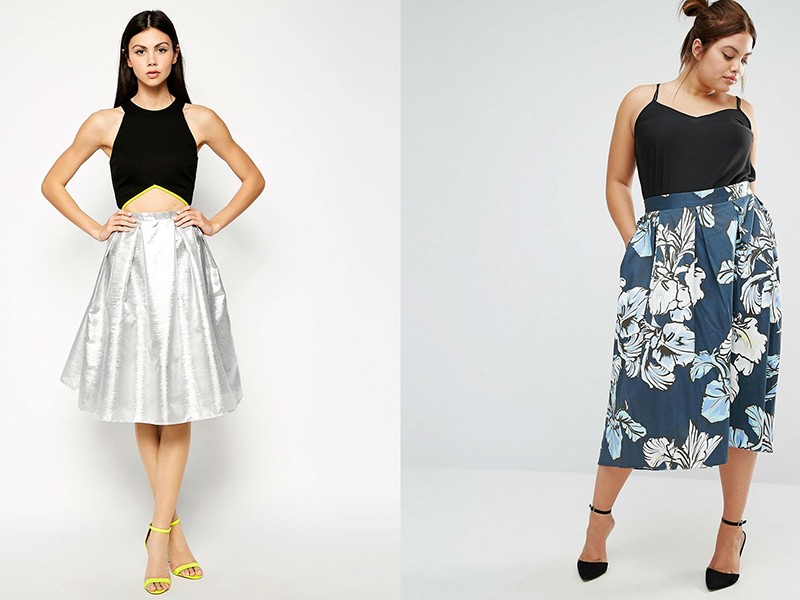
Collections famous fashion designers They present products of different lengths - maxi, midi or above the knee. The samples are convenient and comfortable middle length- This the best option for everyday wear. If the folds are located below the waist, this allows you to visually reduce the volume of the abdomen. This skirt with bow pleats on the yoke is suitable for girls with. The product with a yoke can be of any length, but a sample just below or above the knee looks best.
An original circle skirt with bow pleats will add fullness and volume to your figure. This product is very light and airy, giving femininity to thin girls. The ability to visually adjust the silhouette is an important advantage of flared skirts. The photo shows many options for cutting and placement of folds. Samples are available with straight or asymmetrical, one or more folds. It is this small detail that determines the style and fashion direction clothes.
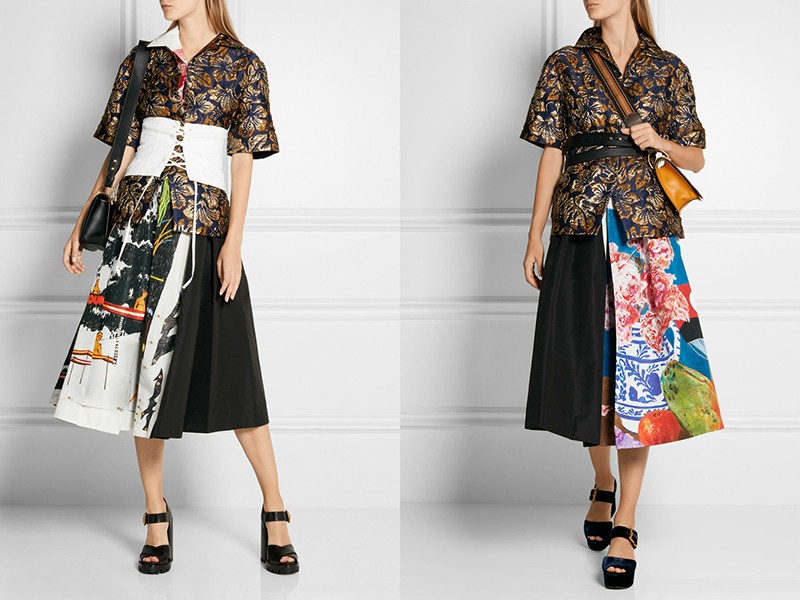
Stylists recommend wearing skirts with rigid pleats for those who tend to be overweight, as soft folds add fullness. Vertical folds from the waistline can lengthen the silhouette and add elegance. This version of long products with a vertical fold is most suitable for overweight women. When composing an ensemble and choosing the type of product, it is important to take into account every detail and create a harmonious image of an attractive and elegant lady.
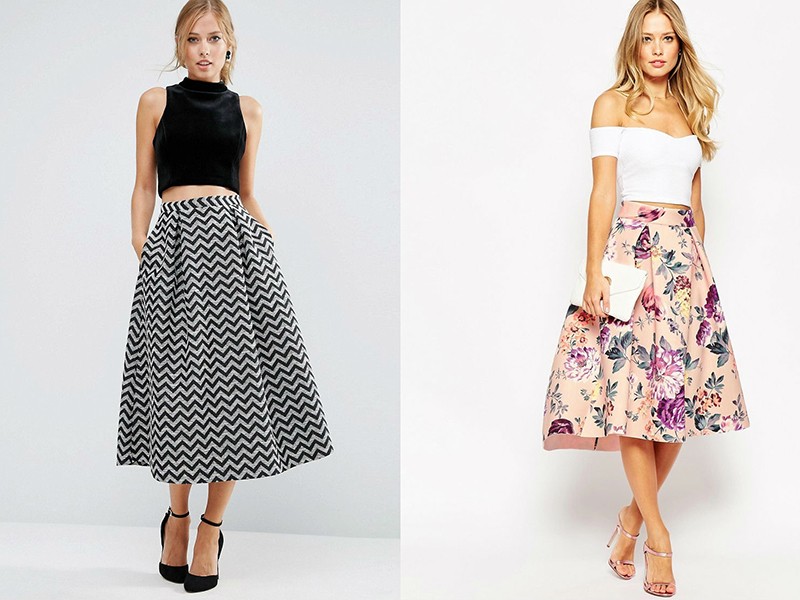
At the peak of popularity was and remains a skirt with bow pleats and pockets, combining classic and modern. Femininity is created by folds, and internal pockets located along the hips add coquetry and frivolity. You can purchase half-sun samples, which are moderately fluffy, provide freedom of movement and perfectly highlight the silhouette. This is a universal option for women, since such models favorably accentuate the waist and highlight the chest.
Popular materials and fabrics
A wide variety of materials are used to make pleated skirts. These can be knitted fabrics, viscose, cotton, linen with the addition of synthetics. A knitted skirt with bow pleats looks gorgeous, which you can make yourself using patterns using a hook or knitting needles. This product softly fits the silhouette, lays in beautiful folds and perfectly decorates the figure. Used for knitting simple patterns and a variety of materials - wool, knitwear, acrylic. Knitted patterns allow you to create gorgeous winter ensembles. For summer period skirts made of chiffon, linen, cotton are more suitable. Light and airy products are comfortable to wear and pleasant to the body. These skirts are used for different purposes - going to the cinema, theater, friendly party or walking.
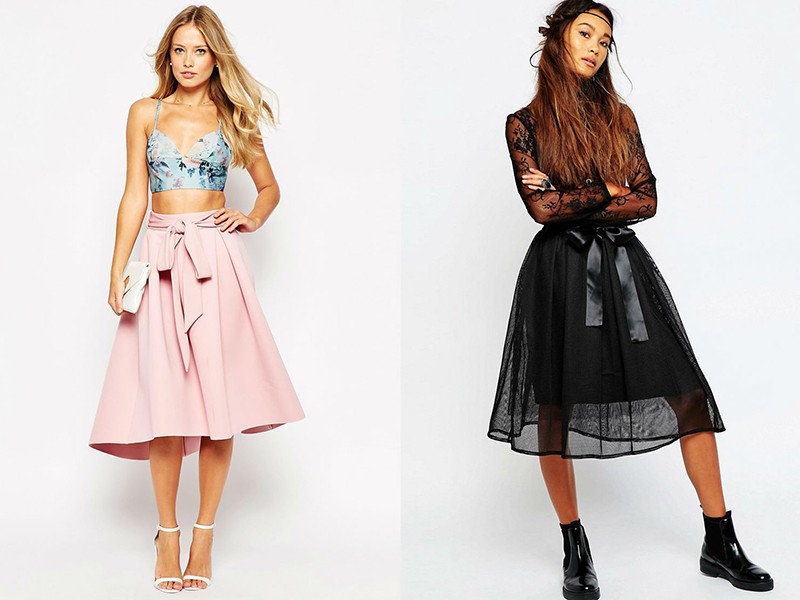
Chic gabardine skirts in a single color are very elegant and original. This outfit is suitable for business meetings, presentations and anniversaries. Decorated with a belt, the sample is especially interesting because it focuses attention on the advantages of the figure. Beautiful fluffy skirt with bow folds causes admiration among others, so the owner of such a thing will become a little frivolous and flirtatious. When composing an ensemble, you can use a wide variety of clothing elements that allow you to accentuate your style and create original images.
The best demi-season option - denim skirt with bow folds, which looks simple and natural. Natural soft material fits casually and stylishly, which is why such skirts are in great demand. Products from thick fabric provide clear lines of the silhouette and hide excess volumes. That's why stylists recommend wearing skirts with tight pleats for women who tend to be overweight.
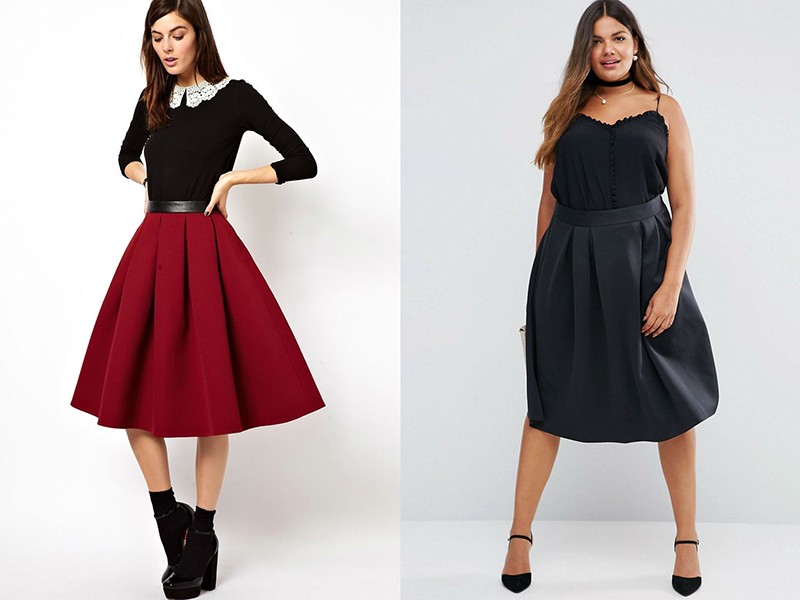
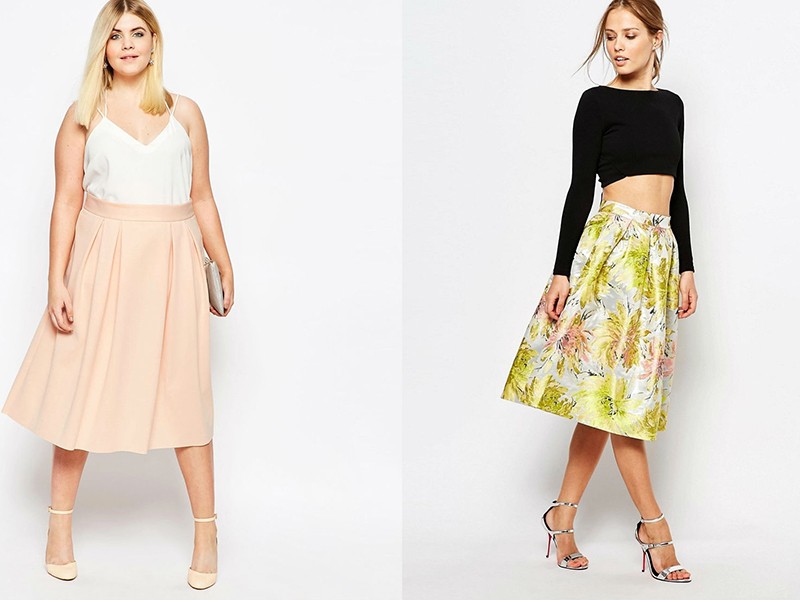
Overweight women you can wear a half-sun style above the knee with a few hard folds starting from the hip line. Skinny girls An elasticated skirt with narrow pleats will add fluffiness. An example of this style balances proportions and allows you to create the perfect one. For those with large breasts and narrow hips, such a pattern will be a godsend when creating a women's ensemble.
What to wear with skirts with bow pleats?
Your own intuition and taste will tell you what to wear with pleated products. You can use such wardrobe items as blouses, sweaters, tops, T-shirts, a light jumper or turtleneck. A work outfit can be complemented with a short fitted jacket. - the most suitable option!
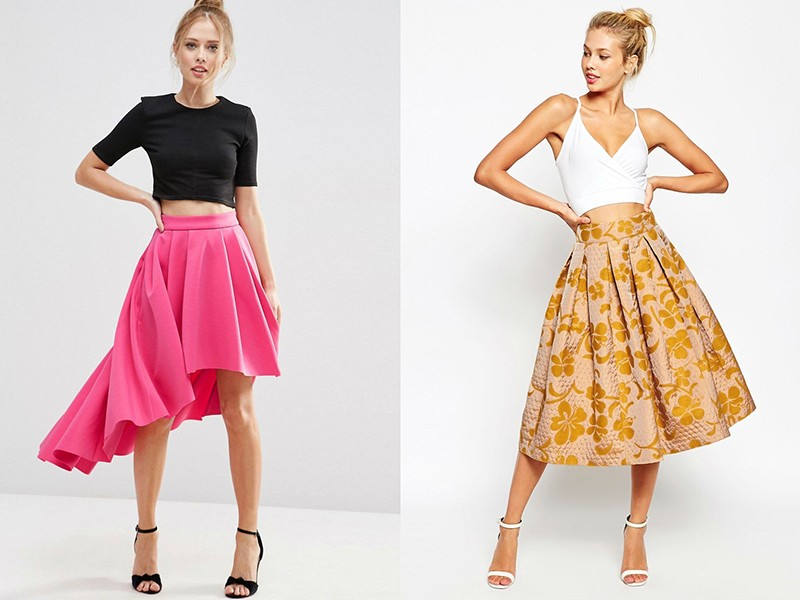
A voluminous scarf will add mischief and coquetry to the image, and shoes high heels will create a slim and attractive silhouette. The beltless style can be paired with a thin T-shirt, while fitted pieces can be paired with a tucked-in top. Whatever image and style you choose, the main thing is to create a harmonious ensemble and be confident in your beauty and irresistibility!
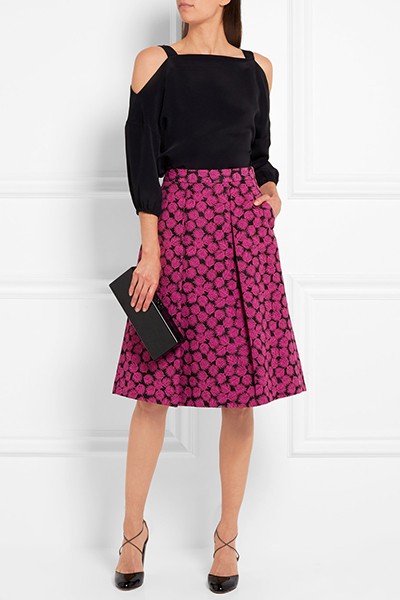
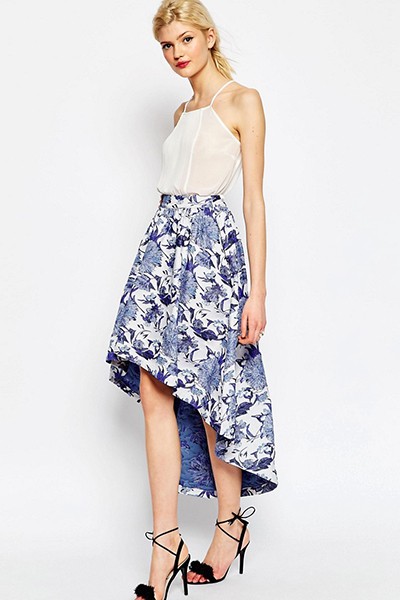
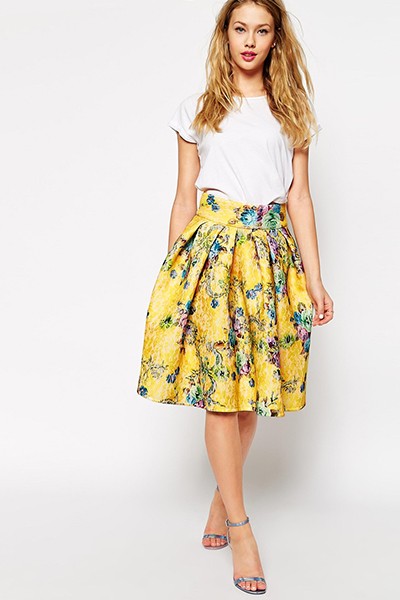
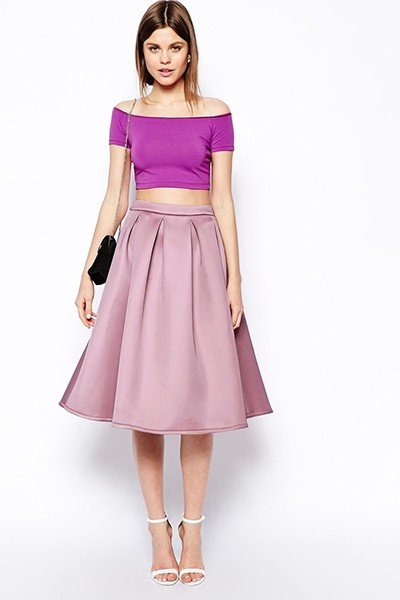
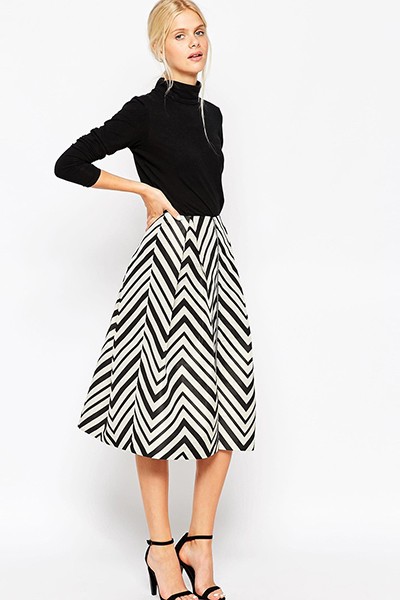
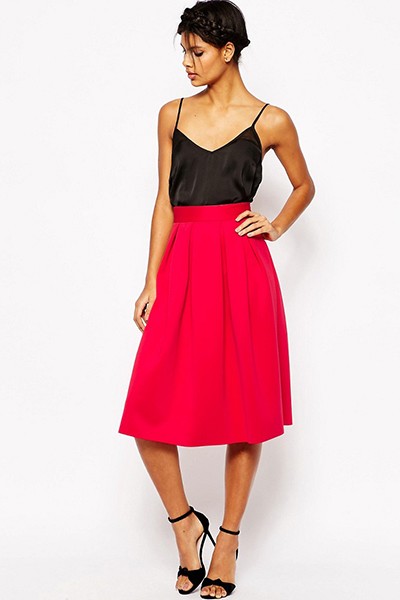
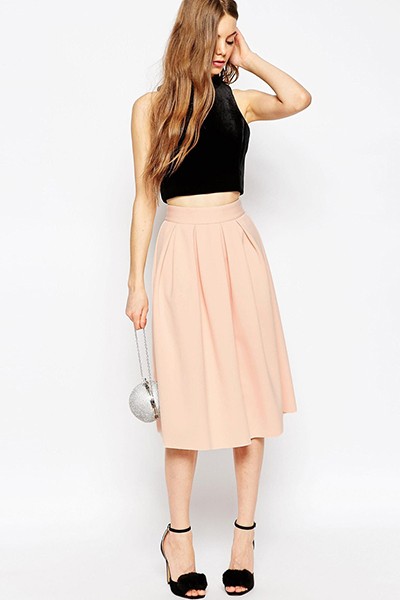
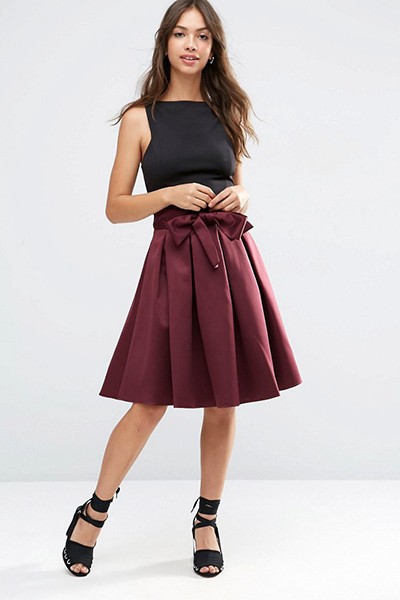
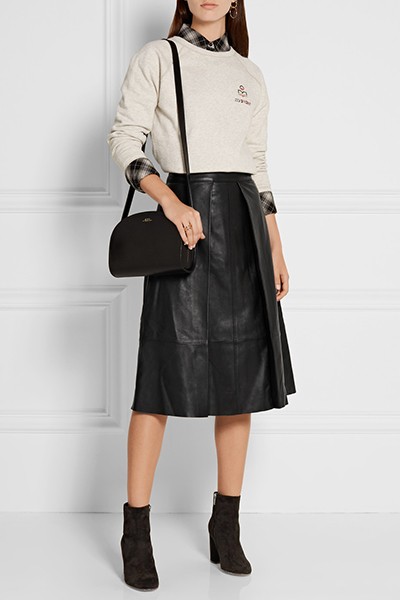
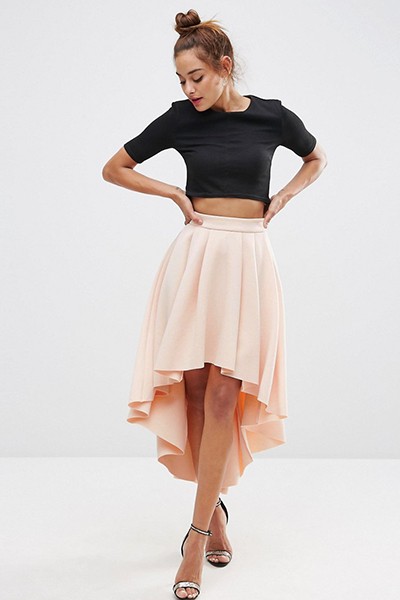
![]()
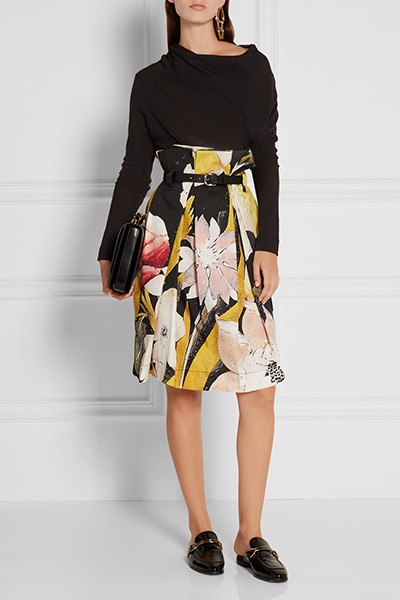
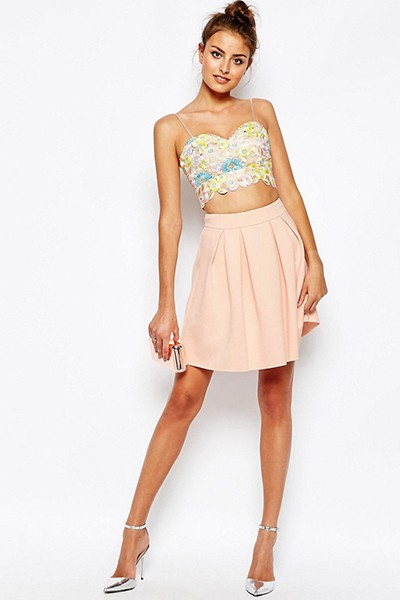
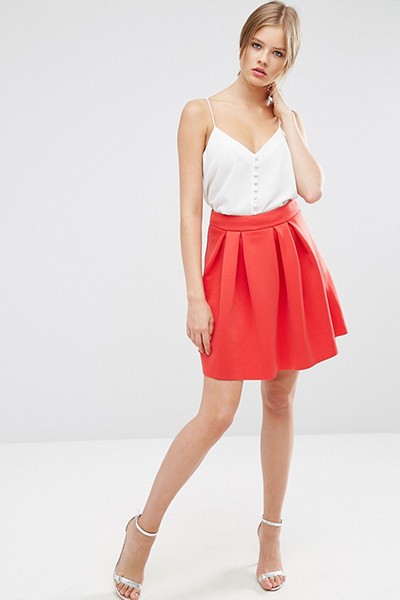
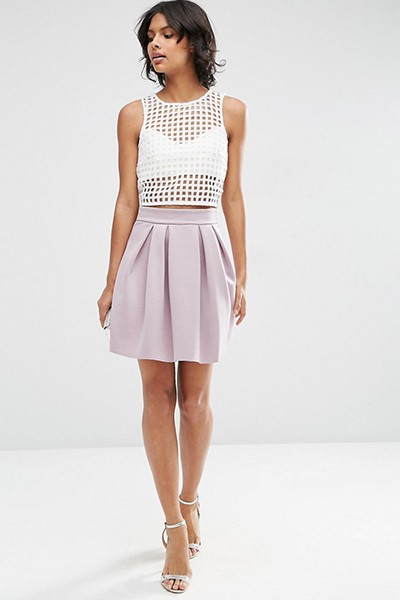
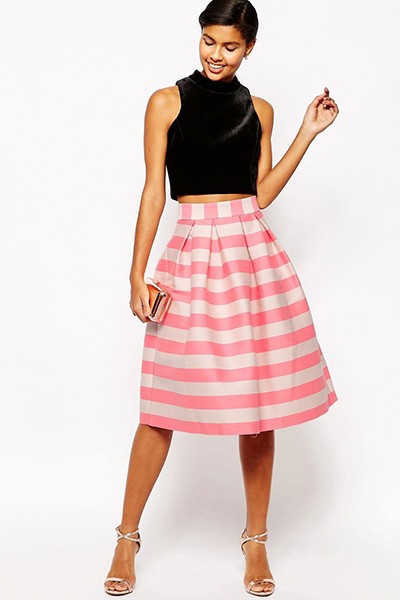
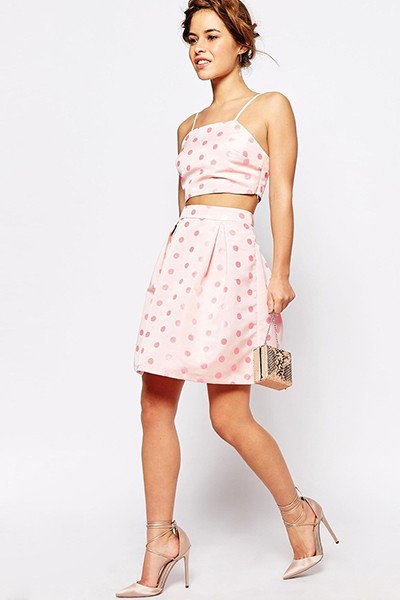
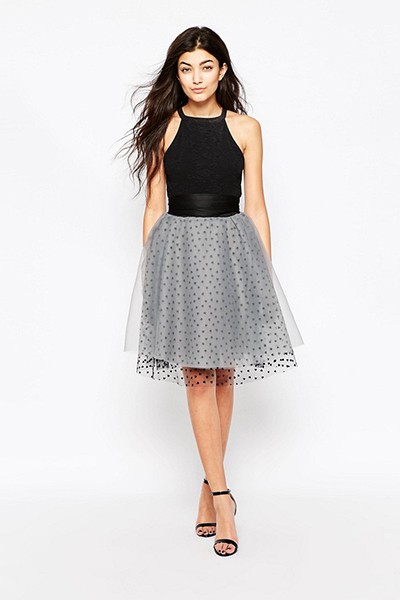
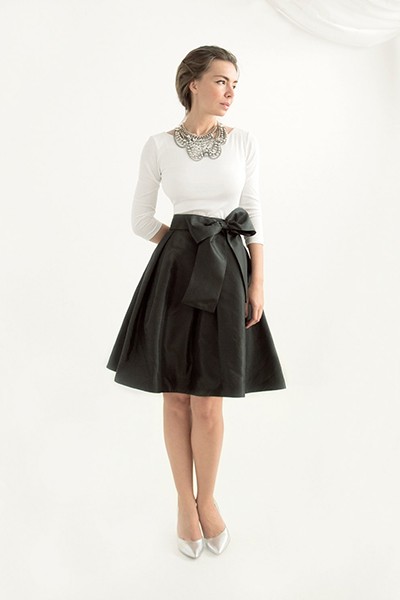
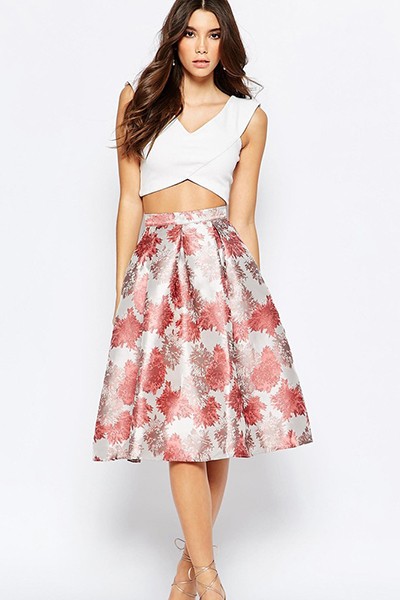
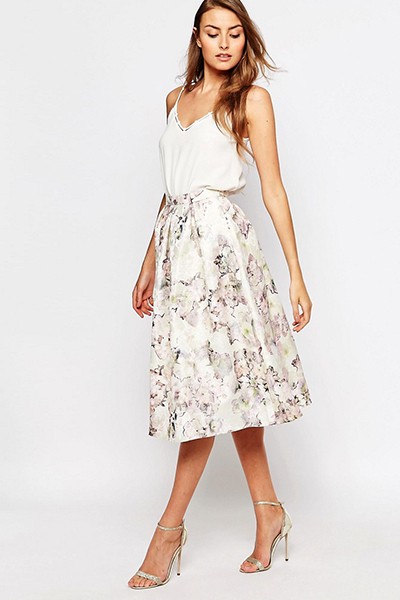
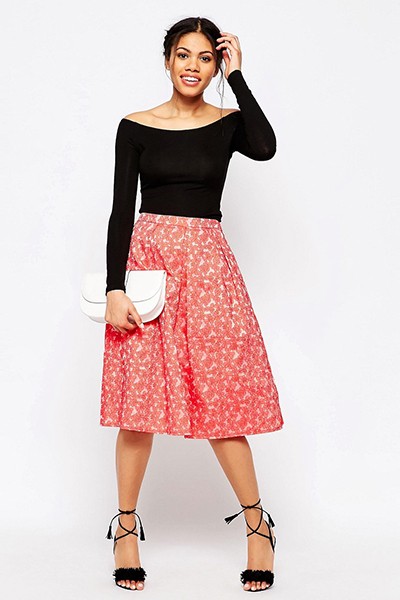
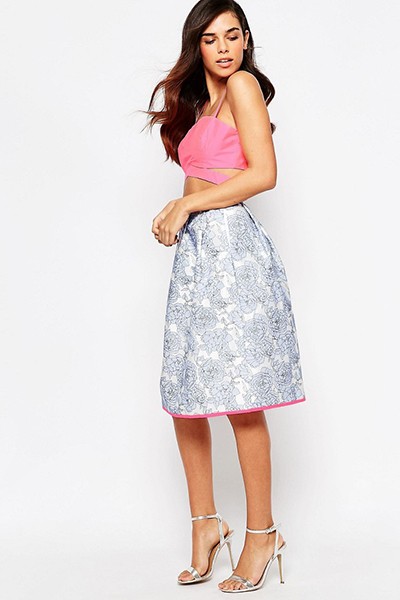
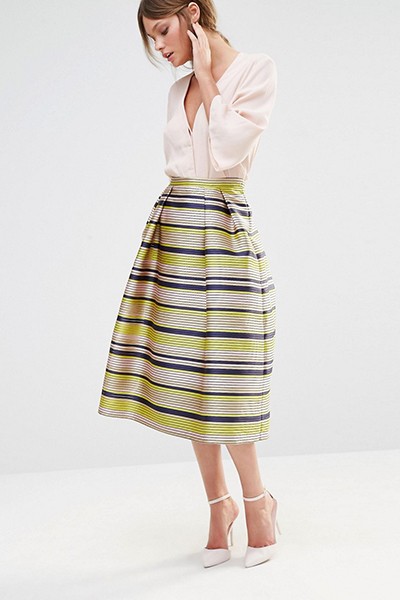
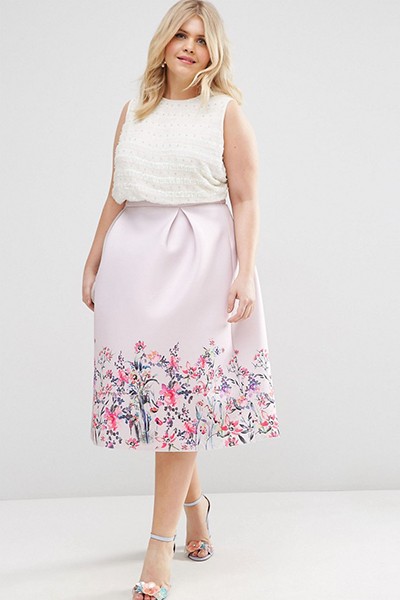
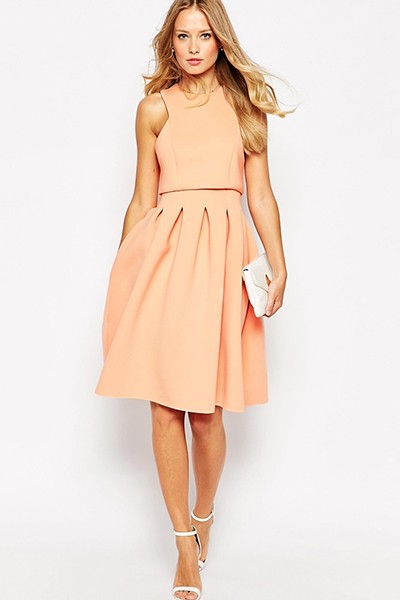
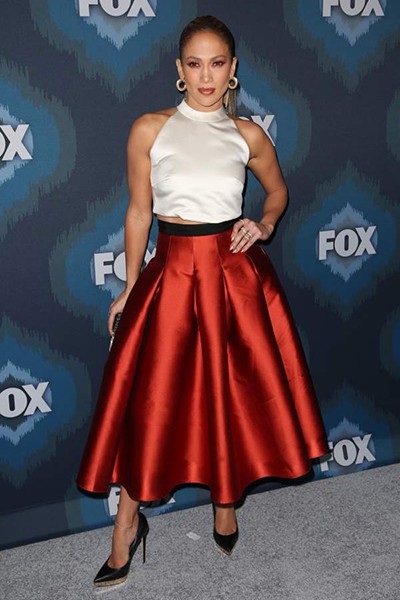
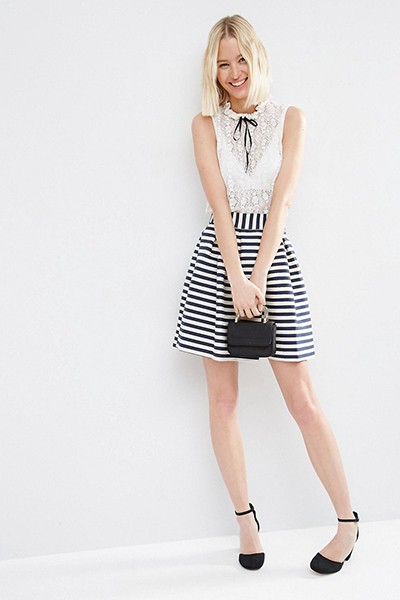
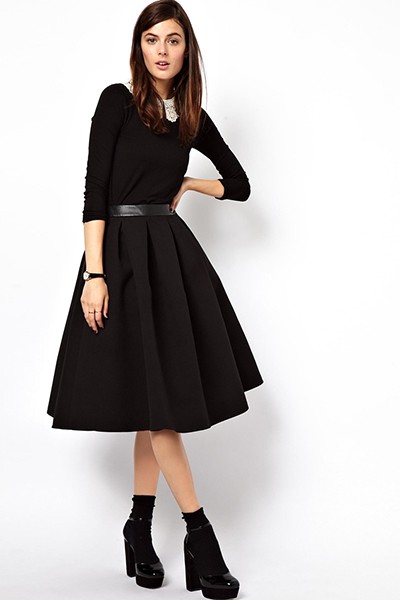
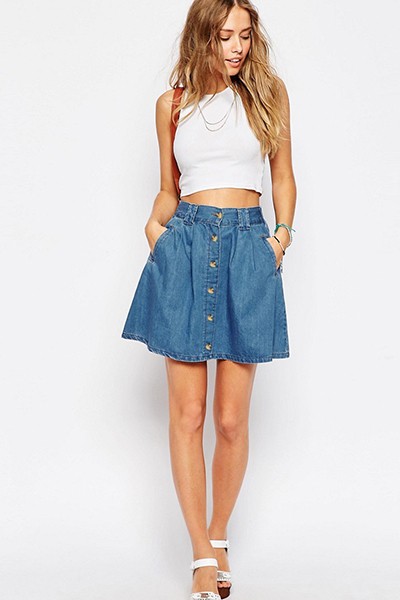
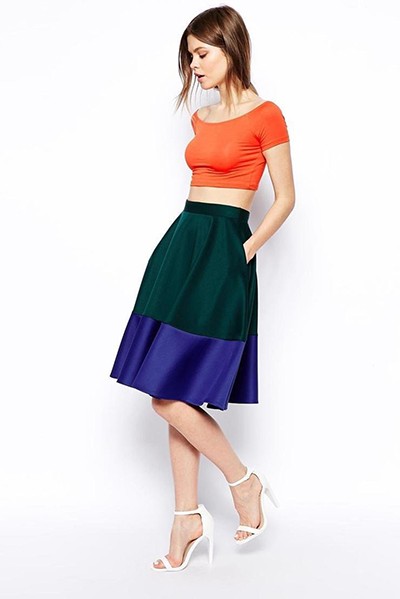
Materials: - fabric -1.50 by 1.70 m (the footage of the fabric depends on the length of the skirt)
- threads to match the fabric
- scissors
- pins
- adhesive material (for gluing belt parts and allowances)
— zipper 20 cm
- fabric chalk
- pattern
- trouser hook
- sewing machine
The fabric must be ironed through damp gauze before cutting. This is done in order to ready product after washing it did not deform.
Taking measurements
The calculation for a pleated skirt is given for the following size range:
Skirt length - 65 cm
Waist circumference - 72 cm
hip circumference - 100 cm
Hip height - 20 cm
Calculation of fabric required for the skirt
The required length of fabric for a pleated skirt is calculated as follows:
Skirt length - 65 cm x 2 = 130 cm (2 widths)
Allowances for the upper and lower cuts - 1.5+4cm=5.5 cm
Belt width - 4 cm x 2+3 cm (seam allowances) = 11 cm
Total: 130+5.5+11=146.5 cm
Calculation of folds
The fabric of the pleated skirt consists of two pieces, each 140 cm wide (excluding seam allowances) and length according to measurements (the length of the skirt is determined depending on the model).
Sew both fabrics along the side seam, trim the allowances and iron them. The resulting width of the canvas is 280 cm (see fig. . 1).
IMPORTANT! Fold the bottom edge of the skirt under and stitch it before starting to add folds. When drawing folds, start with a stitched seam, which should go deep into the fold.
Calculation of the number of economical folds:
Hip circumference - 100 cm
Fold width - 5 cm
Number of folds - 100/5=20 folds.
Calculation of fold depth:
280 cm (web width) minus 100 cm (hip width) = 180 cm.
Divide 180 cm into 20 folds - we get 9 cm (depth of each fold).
Mark the folds on the skirt from the wrong side as shown in Fig. 2.
After ironing the folds, check the resulting width of the skirt - it should be at least 100 cm.
Excess fabric at the waist is removed into folds, evenly across the entire width - see drawing 3.
To calculate the value that needs to be removed in each fold, we apply the formula: 100-(72+1 (increase in freedom of fit at the waist) /20 (number of folds) x 2=(100-73)/40=0.67 cm must be removed on each side along the width of the fold. The above technique allows you to model countless pleated skirts (both one-sided and bow).
The folds can be secured with pins or, for reliability, the author can baste.
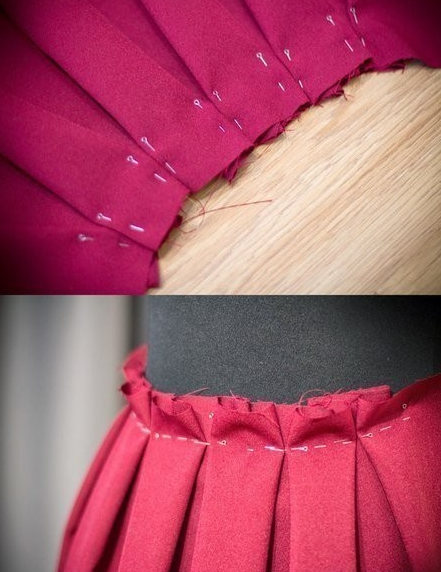
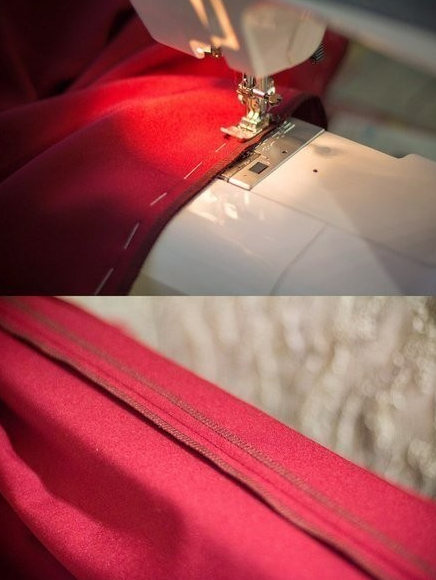
Now we get to the lightning. Before sewing it in, you need to wet it and iron it through gauze. This is done so that later, in the future, the lightning does not lose its shape and spoil appearance products. Next, you need to cut out 2 strips from the duplicating material, approximately 2-3 cm wide and slightly longer than the zipper. We glue the edge and sew on a hidden zipper. After this, we put the skirt aside and begin processing the lining.
11Aug
2014
A skirt is a very successful wardrobe item, because by complementing it with various blouses, blouses and tops, you can always create a new outfit and new image. There are a great many styles of this type of clothing, but pleated skirts are especially popular this season.
The style of the skirt with bow pleats creates additional volume on the hips, helps balance proportions and create a silhouette " hourglass" You should pay attention to this skirt model if you have narrow hips, ample breasts and broad shoulders.
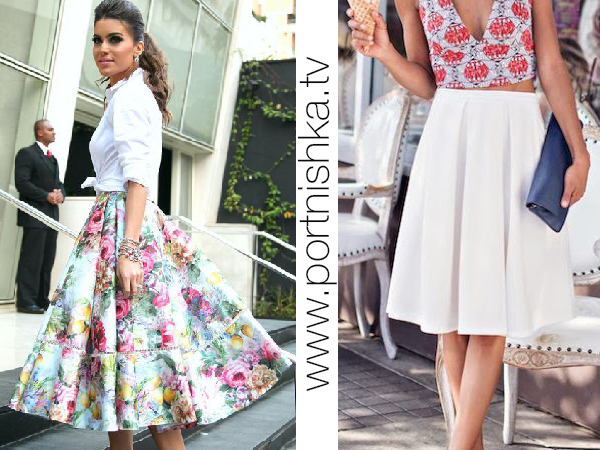
For this style of skirt, a pattern drawing is not made, but calculations are made directly on the fabric from the front side (Fig. 1). For a skirt with bow pleats of fabric, three hip circumferences are required in width with an allowance of 4 cm for a loose fit plus 15-20 cm for seams and fit.
This calculation is based on conventional measurements: waist circumference 72cm, side skirt length 72cm. Fabric width -120cm.
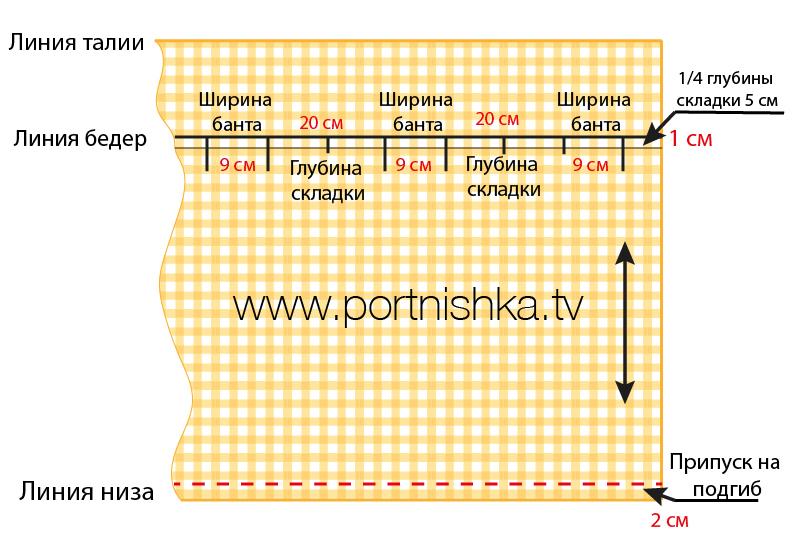
Cutting and sewing.
1.
We cut the fabric pieces to 78 cm, which makes the length of the skirt 72 cm plus 1 cm for processing the belt and plus 5 cm for the hem allowance for the skirt: 72 + 1 + 5 = 78 cm.
2.
Let's connect the canvases to the same width. We sew the seam or seams (depending on the width of your fabric) and press them.
3.
We will process the bottom of the skirt (hem allowance) not reaching the edges 5-10cm.
4.
Lay the fabric face up and measure 1 cm from the top edge of the fabric downwards and draw a waist line across the entire panel.
5.
Mark the hip line on the fabric (see section “Cutting Basics” - Taking measurements).
6.
Let's determine the desired number of bow folds and, depending on the number, determine their width and depth.
For example, our style has 8 bow pleats. To do this, you need to divide the waist circumference of 72 cm by the number of bow folds: 72: 8 = 9 cm (width of the bow fold).
The width of the panel for the skirt is 120 x 2 cuts - 4 (for seams) = 236 cm.
236 - 72 (waist circumference) = 164cm (must be folded).
164: 8 = 20cm (depth of each counter fold).
7.
Mark the folds. From right to left along the hip line, measure 2cm for the side seam. From the seam line we measure 1/4 of the depth of the counter fold: 20: 4 = 5 cm.
8.
We measure the width of the bow 9 cm, then the depth of the counter fold 20 cm. Divide this depth in half and determine the middle of the counter fold.
9.
Thus, we calculate the entire width of the fabric, measuring sequentially the width of the bow and the depth of the folds. At the end of the grinding, measure 1/4 of the depth of the fold and 2 cm for the seam. Through the obtained points we draw vertical lines from the waistline to the hemline.
10.
Reduce the depth of the folds along the bottom line by 1.5 cm on each side. Connect the resulting points with the points on the hip line. The drawn lines will be the outer folds of the folds.
11. We notice the folds. The outer fold of the fold along the hip line should lie in the middle of the depth of the fold strictly along the longitudinal thread.
12. Measure the resulting width of the skirt along the waistline with folds in place.
13.
Subtract your waist circumference from this number. Divide the resulting difference by the number of folds.
14.
By the resulting amount, increase the depth of the folds along the waist line, gradually reducing them “to nothing” to the hip line (Fig. 2).
15.
Stitch the side seam, leaving the area for the fastener (the length of the zipper) unstitched.
16.
We process the remainder of the hem allowance for the skirt.
17.
We process the fastener in the left side seam.
18.
We process the waist line of the skirt with a stitched belt.
19.
Iron the finished product. Considering that the folds in this style are soft, we do not iron them.
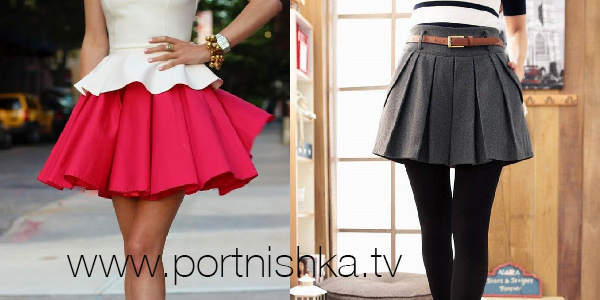
There is nothing new under the sky and everything new is well forgotten old. Each of us has heard this truth more than once. And even more than that, I saw history repeat itself with my own eyes. It is believed that fashion is very changeable and one cannot keep up with it. But if you track trend patterns over several decades, you can easily notice coincidences. A striking example that can be considered a gift" A fashionable sentence"a second life for the pleated skirt, in which the glamorous divas of the 60s shone. Today, this item is again at the peak of popularity, we can say that it is again enjoying its moment of glory. Therefore, it’s time to add a pleated skirt to your wardrobe. Moreover, it is easy to wear and just sew it yourself. In this article we will talk about how to construct a pattern for pleated skirts and about calculating the material for such a model. We will also consider the most fashionable options in this season.
Choice of style and material
If we talk about a trendy pleated skirt, then you immediately need to exclude small pleating. Now it is not relevant. But wide bow or one-sided folds are exactly the models that you should pay attention to. The length of such a product can be midi or mini.
The pattern is quite simple to construct; the main thing here is to arm yourself with a calculator and correctly calculate the required piece of fabric. But what fabric to choose for the product? The main requirement for the material for such a thing is rigidity, so that the fabric holds its shape well. Of course, silk and chiffon can be folded, but they will not look as impressive as katon, linen or brocade. the pattern of which will be discussed below can be an excellent bottom for elegant dress in the style of the 60s. But to do this you need to choose a stiff, protruding fabric to create the desired silhouette. 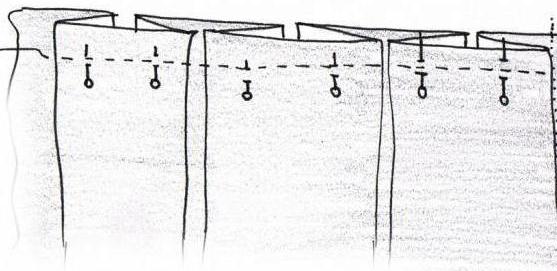
The color of the canvas is a matter of taste, and there are no rules here. These can be plain canvases, checks, floral motifs and abstraction with all the colors of the rainbow. The main thing is to correctly combine the colorful bottom with a calmer top.
Building a template
Into the fold from straight section fabric can be built directly on the canvas. But if this is a sun or half-sun model, then you will need to make a template from auxiliary material.
In order to make a blank, you will need to measure your waist size. The hips are not measured for the simple reason that this girth will easily fit into the circumference of the skirt, which will increase due to the folds. But if the figure is non-standard or the folds are not full, but only half the width, then taking measurements from the hips is necessary. 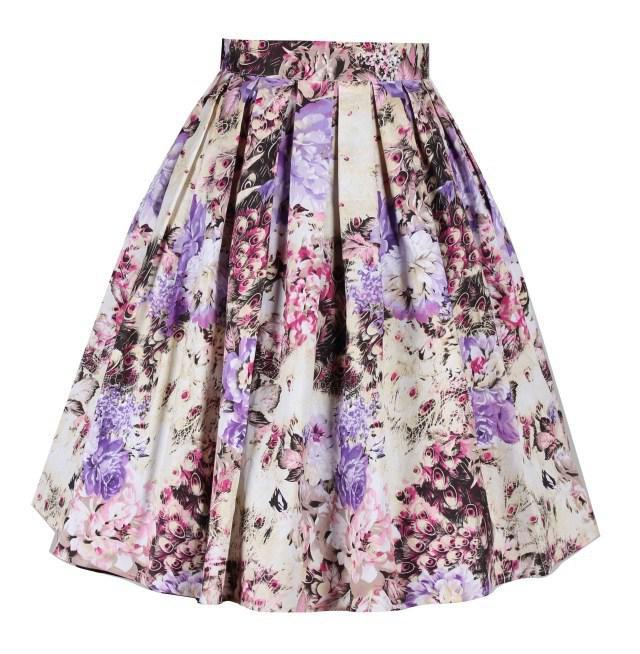
Calculation for a straight pleated skirt
How to build with folds? The pattern of such a model is immediately marked on the canvas. Along the edge of the fabric, mark the length of the skirt + seam allowances for attaching the waistband and hem at the bottom. Depending on your waist size, you may need two or three of these pieces. All that remains is to calculate the width of the fold. To do this, you need to divide your waist size by the desired number of folds. Or, conversely, based on the quantity, calculate the width.
In an economical option, the pattern of pleated skirts can be drawn out with incomplete folding. This will not affect the appearance of the product, but less material will be required. In this version, you need to take not three girths, but two or two and a half. 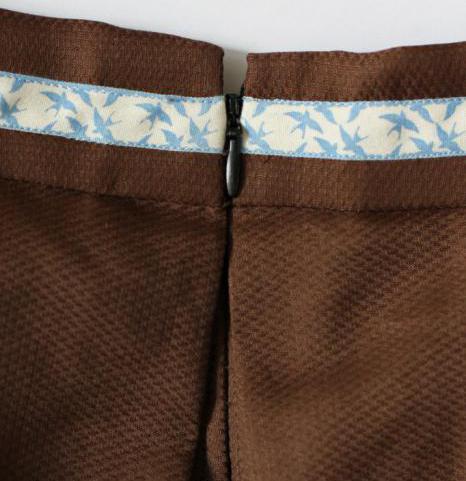
Calculation of bow folds
The rule of multiplying the waist size by 3 also works here. However, the pattern of a skirt with bow pleats is constructed somewhat differently. The fabric for the straight model is also cut in stripes. The length is laid down along the armhole, and allowances for processing are made along the top and bottom of the strip. It can also be with incomplete laying. Accordingly, the volume of the product will depend not only on the width of the fold, but also on its depth. Ideally, the markings consist of fold width marks, fold mark, start depth mark, full depth mark and second fold mark.
Calculation and construction of a sun model
How is fabric calculated for pleated fabric? The pattern of the standard version assumes that the fabric must be folded in four, retreating from the angle of 1/6 of the waist circumference and marking the waist line at this distance. After this, the required length is already retreated from this line and the hem lines are outlined. The pattern of pleated skirts for the sun model is cut according to the same principle. There is nothing complicated in the construction. You only need to multiply 1/6 of the waist volume by 3 so that folds can be created.
It is worth noting that with this cutting, the fabric width of 1.5 m is not enough to fold the fabric in four. Therefore, you will need to make a skirt from several parts. In this case, during cutting it is necessary to make allowances for the connecting seams. 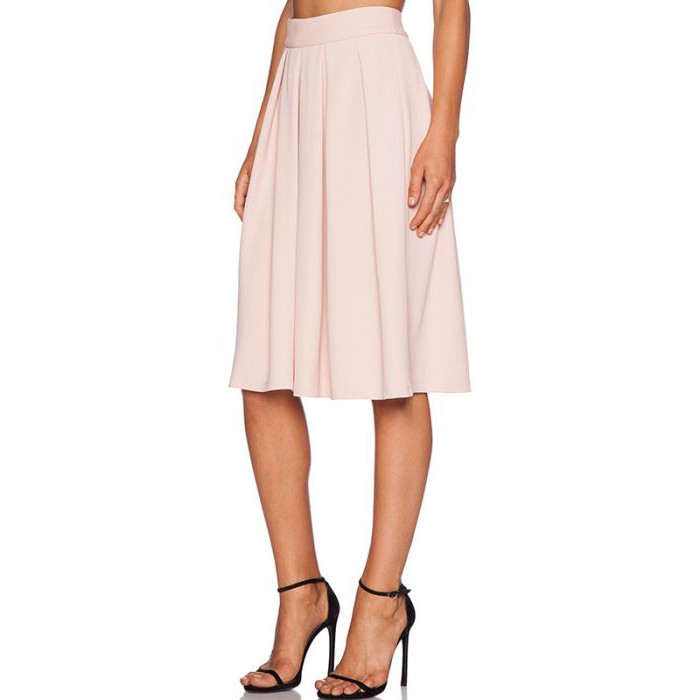
Assembling the skirt
After marking, all folds are smoothed and basted. Then a zipper is sewn into one of the seams. A belt in the form of a narrow strip folded in half is sewn along the waist line. Next, the bottom of the product is processed. You can simply fold it in half and stitch it, or you can process it on an overlocker, press it and stitch it.
You will need to make a loop on the belt and sew on a button. Or use a hook or sewing button as a fastener. The end result will be a distinctive skirt with pleats. The pattern of this product is so simple that even the most inexperienced beginner can handle sewing. Therefore, all doubts go away! It's time to treat yourself to something new that you made yourself!

